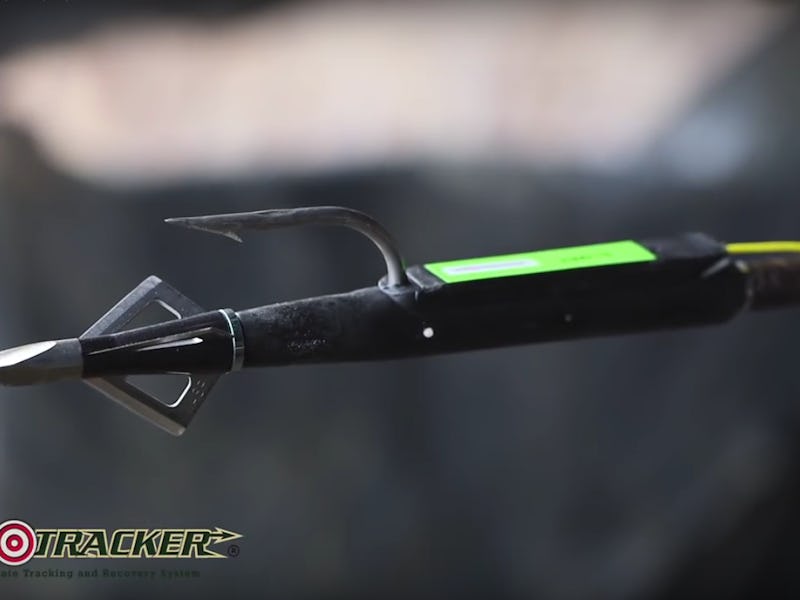Is This the High-Tech Arrowhead's Watershed Moment?
Bowhunters have been inventing electronic game trackers for decades.

Hunters — especially of the bow and arrow variety — will always remember (and rue) the one that got away: the clean hit, surely fatal, that failed to fell a wounded animal through the thick bush. But what if the arrow could come with a tracking device that left no shot animal behind?
Gary Christensen’s got a solution. His system, the Pro-Tracker, snags a wounded animal with a small transmitter. A handheld receiver then reads the strength of the signal and tracks the animal towards its final resting place.
“There is nothing worse than to have somebody that cannot find an animal, and they give up too early,” Christensen tells Inverse. “Either you lose the blood trail because it didn’t bleed enough, or you got a storm and it washes the blood away, or it gets dark and you can’t find it.”
He’s certainly not the first to bank on a technological solution to the wounded animal problem. Early low-tech systems, still on the market today, involve spooling thread that comes out the back of the arrow, allowing you to follow the animal as it runs away.
Patents for electronic tracking systems for bowhunting have been filed in the United States as far back as 1990, and every year some inventor thinks he has the bright idea that will become the industry standard and make a mint. And yet, the vast majority of archers still use good old fashioned blood trails and, failing that, wandering around in circles until the frustration is too much to bear.
Christensen thinks he’s worked out the kinks of earlier models and come up with the thing that will bring the hunting community on board. Unlike other similar products, his transmitters are rechargeable, and the receiver can track a specific transmitter, which avoids confusion if more than one hunter in the area is using the same system, he says.
Not all hunters are thrilled with the idea of attaching high-tech gadgets to their bows and arrows. Some feel that this takes some of the skill and game out of the hunt, and encourages people to try their hand without proper training. Many states have outlawed electronic aids physically attached to bows and arrows as a way to ensure fair chase.
But Christensen vehemently disagrees, arguing that the Pro-Tracker won’t make you a better hunter, and it won’t help you take a fatal shot. But if you do manage to, it will help make sure the meat and your trophy make it home with you. “We’re not trying to say don’t use your skills as a hunter,” he says. “What we’re saying is use this as a means to help you find it, so that you can recover it quickly and the meat is still good.”
His system’s transmitters also only have a battery life of about 12 hours, which should minimize incidents of hunters taking a bad shot rather than no shot at all with the idea of tracking the animal down with the receiver.
Christensen says regulators he’s talked to find that the benefits outweigh the potential downsides, and they foresee laws being changed to allow for this sort of equipment where it isn’t already. And he’s bullish that his technology will get a hold on the market where others have not. In three years, he’s sold 1,500-2,000 systems, he says, all at trade shows or off the website. In five years he bets 30-40 percent of bowhunters will be using it.
He’s going to have some competition. There are arrows with trackers right inside, although they’re better at recovering arrows than animals, since arrows often travel through the game or fall out. There’s the Game Vector, a similar system that’s also been around for a few years. One inventor in Virginia says he’s working on a product called GameTracker that he hopes will work with a smartphone rather than an external receiver and cost as little as $200. The Pro-Tracker, by comparison, starts at about $700.
The idea of an arrow fitted with a game tracker is clearly enduring, and the technology might finally be catching up with the imaginations of inventive hunters. Whether one of these products or something like it takes over the bowhunting world will depend largely on whether the community is willing to weaken reliance on old-fashioned tracking by boosting it with a surefire backup plan.